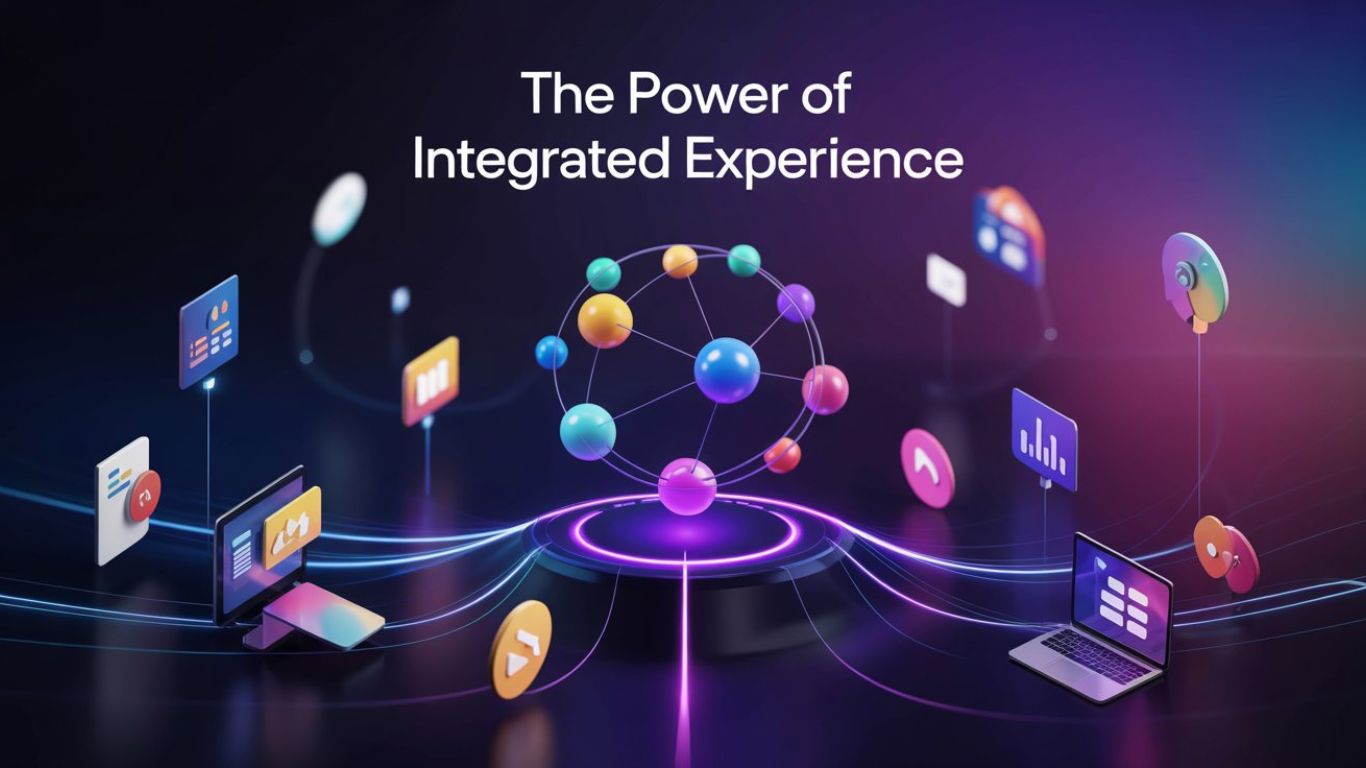Integrated Experience, a term increasingly permeating business and technology discussions, signifies more than just interconnected systems. It represents a paradigm shift in how organizations engage with their stakeholders. Understanding its core principles unlocks significant potential for growth and enhanced operational efficacy. Let’s delve into the multi-faceted nature of integrated experience.
The Essence of Holistic Engagement: Defining Integrated Experience
At its heart, Integrated Experience (IX) refers to the orchestration of disparate customer touchpoints and internal processes into a unified, seamless journey. It moves beyond the traditional silos of customer experience (CX), user experience (UX), and employee experience (EX) to create a synergistic ecosystem. This convergence ensures consistency, relevance, and value across every interaction a stakeholder has with an organization, regardless of the channel or department involved. This is accomplished through digital and physical environments.
Beyond Silos: The Symbiotic Relationship of CX, UX, and EX
While CX focuses on the overall perception a customer has of a brand, UX hones in on the usability and delightfulness of specific interfaces. EX, conversely, centers on the well-being and productivity of employees. Integrated Experience recognizes that these three facets are inextricably linked. A positive EX directly translates to improved CX and UX. When employees are empowered and well-supported, they are better equipped to deliver exceptional service and create intuitive, user-friendly products and services. This symbiosis creates a virtuous cycle, fueling continuous improvement and stakeholder satisfaction.
Technological Underpinnings: Enabling the Integrated Ecosystem
The implementation of Integrated Experience relies heavily on technological infrastructure. Cloud computing, data analytics, and artificial intelligence (AI) are crucial components. These technologies facilitate the collection, analysis, and utilization of data to personalize interactions and optimize processes. Customer Relationship Management (CRM) systems, Enterprise Resource Planning (ERP) systems, and Marketing Automation platforms are integrated to share information and automate tasks. The goal is to provide a 360-degree view of each stakeholder, enabling proactive and personalized engagement.
Strategic Imperatives: Why Integrated Experience Matters
Several strategic imperatives drive the adoption of Integrated Experience. First, it fosters enhanced customer loyalty. By providing seamless and consistent experiences, organizations can build stronger relationships with their customers, reducing churn and increasing lifetime value. Second, it boosts employee engagement. When employees feel valued and supported, they are more likely to be productive, innovative, and committed to the organization’s success. Third, it drives operational efficiency. By streamlining processes and automating tasks, organizations can reduce costs and improve productivity.
The Human Factor: Empathy and Personalization
Despite the reliance on technology, the human factor remains paramount in Integrated Experience. Empathy, the ability to understand and share the feelings of others, is crucial for creating meaningful interactions. Organizations must invest in training their employees to develop their empathy skills and empower them to make decisions that prioritize the needs of stakeholders. Personalization, tailoring experiences to individual preferences and needs, is another key element. By leveraging data and technology, organizations can deliver personalized content, offers, and services that resonate with each stakeholder.
Challenges and Mitigation Strategies: Navigating the Complexities
Implementing Integrated Experience is not without its challenges. One common obstacle is organizational silos, where different departments operate independently and lack effective communication. Overcoming these silos requires a cultural shift towards collaboration and cross-functional teamwork. Another challenge is data integration, ensuring that data from different systems is accurate, consistent, and readily accessible. This requires a robust data governance framework and investment in data integration tools. Finally, resistance to change can hinder the adoption of Integrated Experience. Addressing this resistance requires effective communication, training, and stakeholder involvement.
Metrics and Measurement: Gauging the Impact of Integration
Measuring the impact of Integrated Experience is essential for demonstrating its value and identifying areas for improvement. Key performance indicators (KPIs) should be aligned with strategic objectives and tracked regularly. These KPIs may include customer satisfaction scores (CSAT), Net Promoter Score (NPS), employee engagement scores, and operational efficiency metrics. By monitoring these metrics, organizations can gain insights into the effectiveness of their Integrated Experience initiatives and make data-driven decisions.
Future Trends: The Evolution of Integrated Engagement
The field of Integrated Experience is constantly evolving. Emerging trends include the increased use of AI and machine learning to personalize interactions and automate tasks. Another trend is the growing importance of omnichannel experiences, providing seamless transitions between different channels, such as online, mobile, and in-store. Furthermore, the focus on sustainability and social responsibility is becoming increasingly important. Organizations are expected to integrate these values into their Integrated Experience strategies, demonstrating their commitment to creating a positive impact on society and the environment. The emphasis on low-code or no-code platforms will also empower more stakeholders to contribute to the integrated experience without requiring extensive technical expertise.
Embracing the Future: A Call to Action
Integrated Experience is not merely a buzzword; it is a strategic imperative for organizations seeking to thrive in today’s competitive landscape. By embracing a holistic approach to stakeholder engagement, organizations can unlock significant potential for growth, innovation, and lasting success. This entails breaking down silos, investing in technology, empowering employees, and prioritizing the needs of stakeholders. The journey towards Integrated Experience is a continuous process of learning, adaptation, and improvement. Begin by assessing your current state, identifying areas for improvement, and developing a roadmap for implementation. The time to act is now. The future of business is integrated.









Leave a Comment